Kanji for Person or Human Being: 人 (Hito)
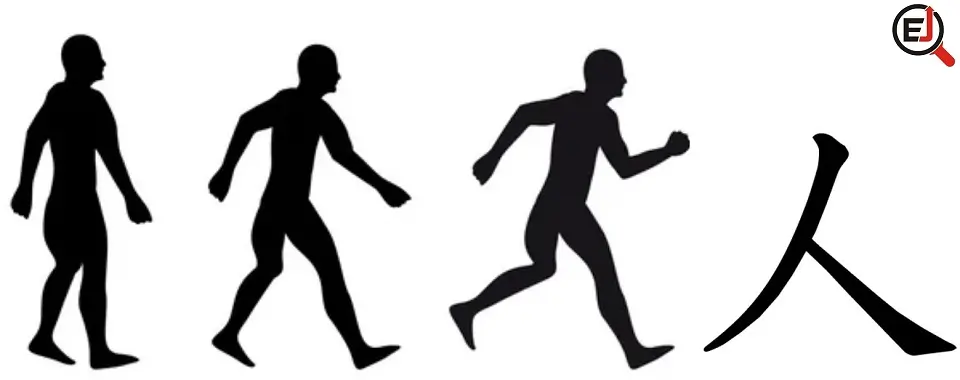
The Japanese Kanji for “person” or “human being” is 人.
- The onyomi (Chinese reading) of 人 is “jin” or “nin”.
- The kunyomi (Japanese reading) of 人 is “hito”.
Person’s Kanji 人 is constructed with 2 strokes. This Kanji is a part of the JLPT N5 syllabus (please check the list of JLPT N5 Kanji). In Japanese schools, this Kanji is taught in grade 1.
Origin of the Person’s Kanji 人
In its earliest forms of the Chinese scripts, the Kanji 人 representing a person resembled a side view of a standing person with a head, body, and legs.
The following illustration shows the shape of the Kanji, meaning a person in Oracle Bone Script, Bronze inscription, small seal script, and its current shape:
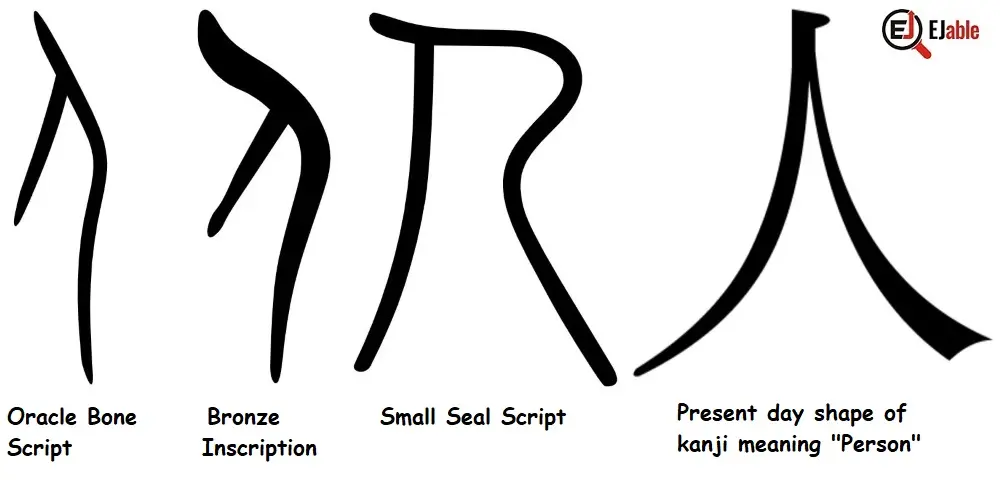
Over time, this pictograph was simplified to the two-stroke character we have today.
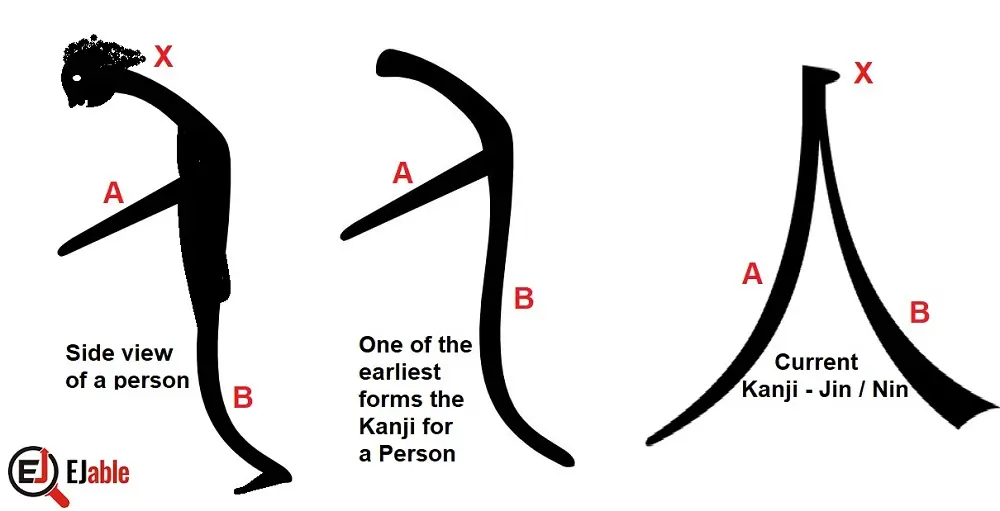
How to Remember the Kanji for “Person”
Though the above-explained origin of the kanji 人 can make remembering it easy. However, for a more effective way of remembering this kanji, you can consider this as two strokes representing a person’s legs.
Though there are a few other bipedal animals in the world, human beings are the main bipedal mammals in the world. So. It’s easier to remember this Kanji representing two legs of a human. The following picture can make it easier to visualize the same to remember the kanji.
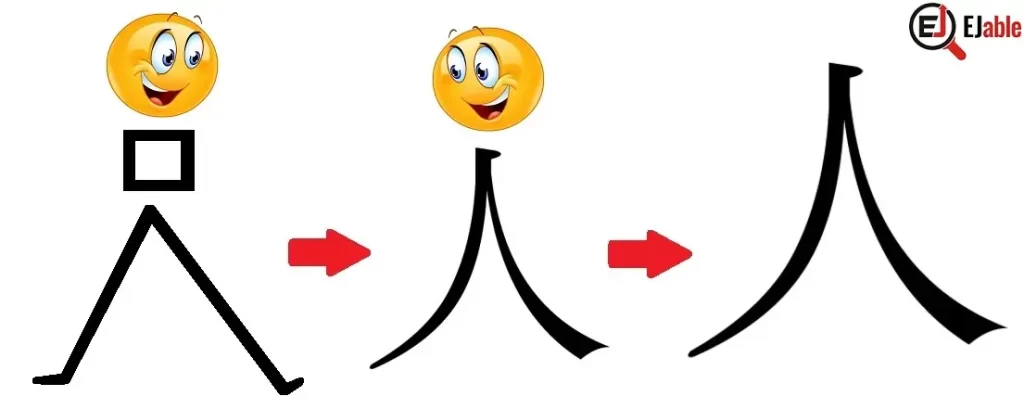
Stroke Order for the Kanji 人
The following illustrations show the stroke order to write the Kanji 人:
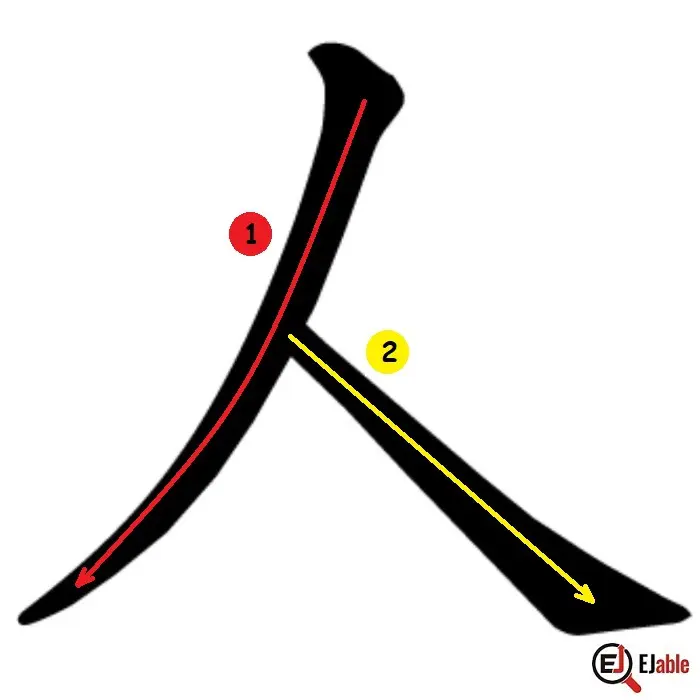
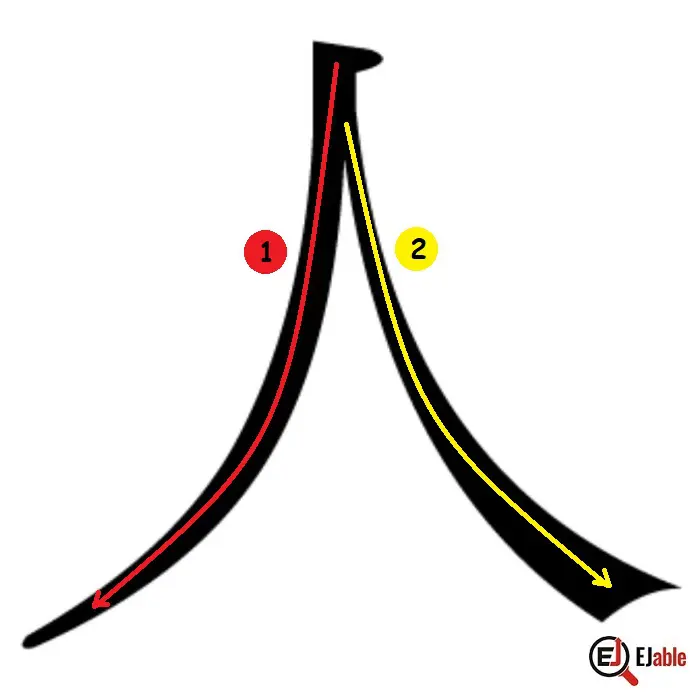
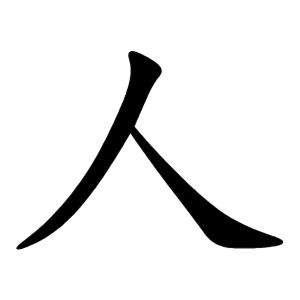
人 Kanji as a Radical
The kanji for “person,” 人, is also used as a Kanji radical known as “ninben” or “hitoben“. It’s frequently used in kanji with meanings related to people or human activities. When 人 appears as a radical, its position can vary and appear slightly different.
Overall, Kanji 人 appears as a radical or as a component in 3159 Kanji characters, including 409 Jōyō Kanji.
Examples of 人 as a radical
Following are some examples of kanji where 人 (person) appears as a radical:
- 他 (ta, “other”): Here, 人 appears on the left side of the kanji, providing a sense of a person in relation to others.
- 休 (kyuu, “rest”): Here, 人 appears on the left side of the kanji again, implying a human activity – in this case, rest.
- 仮 (ka, “temporary”): This kanji uses the 人 radical on the left to impart a meaning related to people or society.
- 信 (shin, “truth” or “faith”): Here, the 人 radical appears on the left, which can be interpreted as the action or belief of a person.
- 伝 (den, “transmit”): In this kanji, 人 is on the left. The kanji illustrates the idea of a person passing information from one to another.
- 仕 (shi, “serve”): This kanji has 人 on the left and can be seen as a person in service or doing a task.
- 借 (shaku, “borrow”): The 人 radical is also on the left here, symbolizing a person engaging in borrowing.
- 健 (ken, “health”): This kanji contains the 人 radical on the left. It represents the idea of a person and health.
These examples show how the 人 radical appears in a range of kanji, offering a sense of human involvement or attributes. The context of the whole kanji, including its other components, always guides the final interpretation.
Kanji 人’s Use in Japanese Language
The kanji for “person,” 人 (ひと, hito), is widely used in the Japanese language. There are 753 Japanese words that begin with the Kanji 力, and it appears in 2357 words.
Examples of Kanji 人 in Compounded Kanji Characters
Following are the examples where Kanji for a person or human being appears in Japanese compounded Kanji characters:
- 人口 (じんこう, jinkou): Population.
- 人生 (じんせい, jinsei): Human life, life.
- 人物 (じんぶつ, jinbutsu): Character, person, figure.
- 人間 (にんげん, ningen): Human being, person.
- 外人 (がいじん, gaijin): Foreigner.
- 一人 (ひとり, hitori): One person, alone.
- 人類 (じんるい, jinrui): Humankind, humanity.
- 人形 (にんぎょう, ningyou): Doll, puppet.
- 人種 (じんしゅ, jinshu): Race (ethnicity).
- 人事 (じんじ, jinji): Personnel affairs, human resources.
- 人権 (じんけん, jinken): Human rights.
- 人気 (にんき, ninki): Popularity.
- 人工 (じんこう, jinkou): Artificial, human-made.
- 人類学 (じんるいがく, jinruigaku): Anthropology.
- 人道 (じんどう, jindou): Humanity, human path.
These examples show how the concept of “person” or “human” is integrated into various contexts, from descriptions of individuals and humanity as a whole to aspects of society, culture, and ethics.
Do check other Kanji characters on the page “How to Remember Kanji“.

A long-term ex-pat in Japan, Himanshu comes with an IT background in SAP consulting, IT Business Development, and then running the country operations of an IT consulting multinational. Himanshu is the co-founder and Managing Director of ReachExt K.K. and EJable.com. He is also an Advisory Board Member of a Silicon Valley AI/IoT startup.
